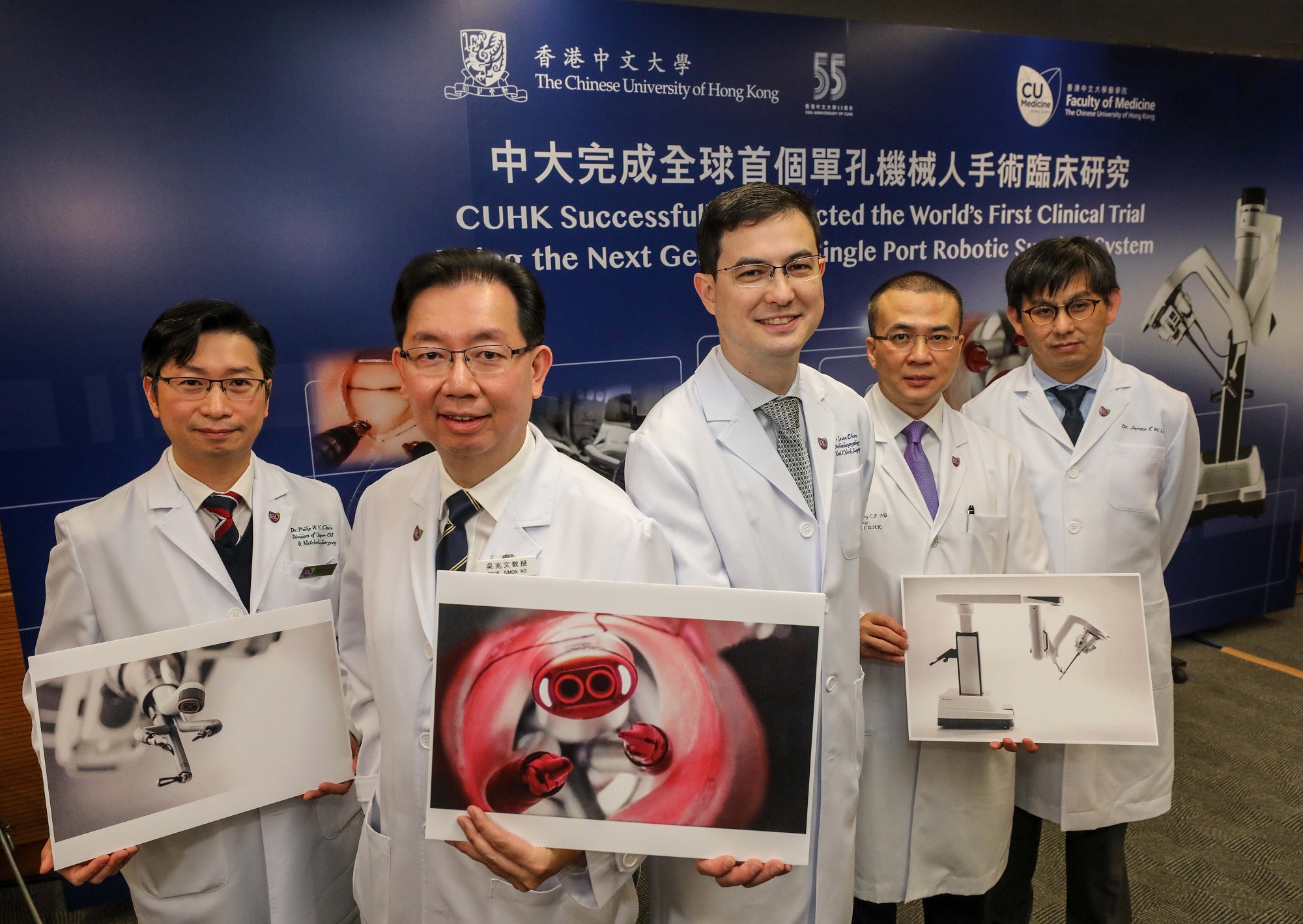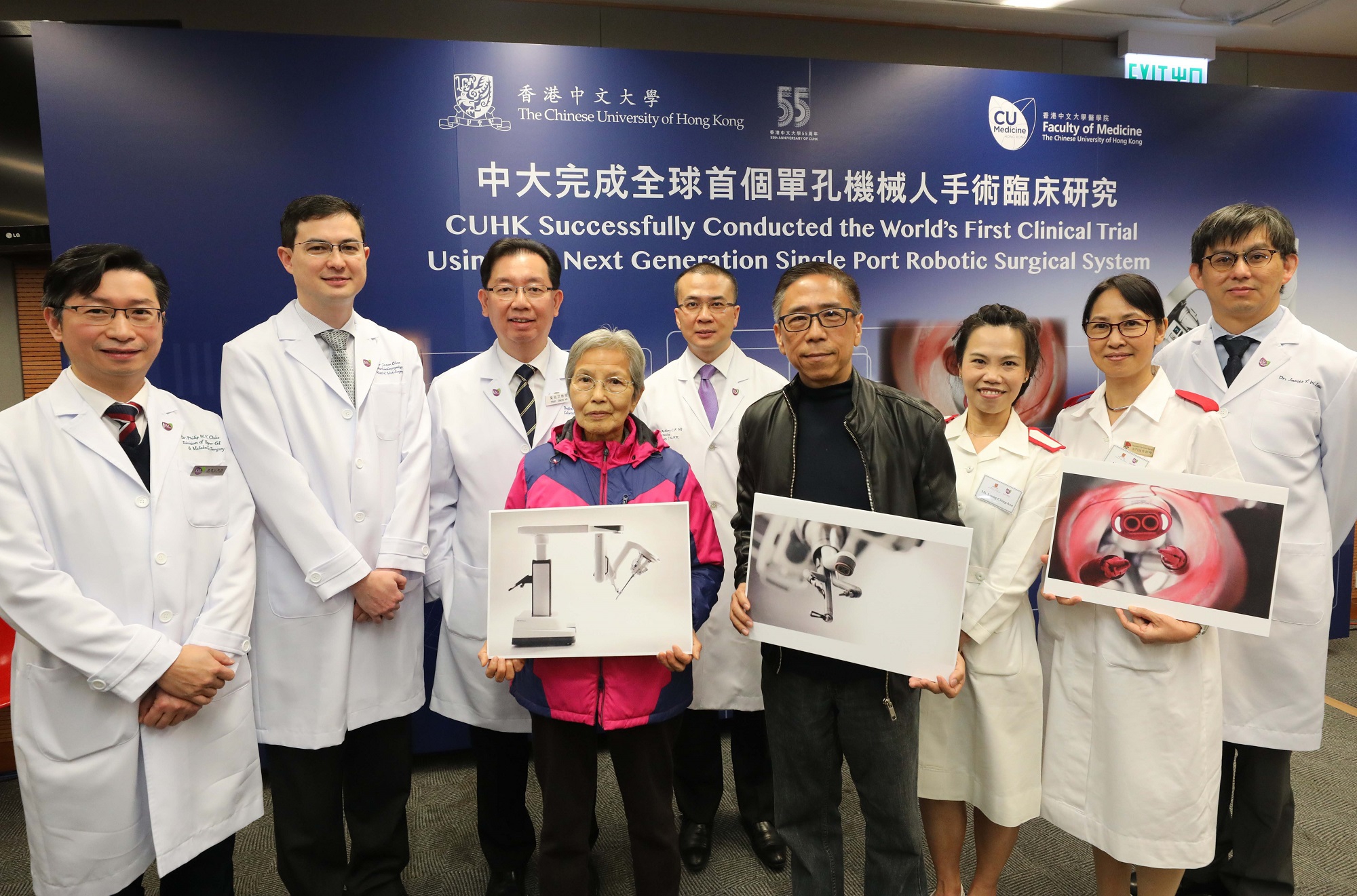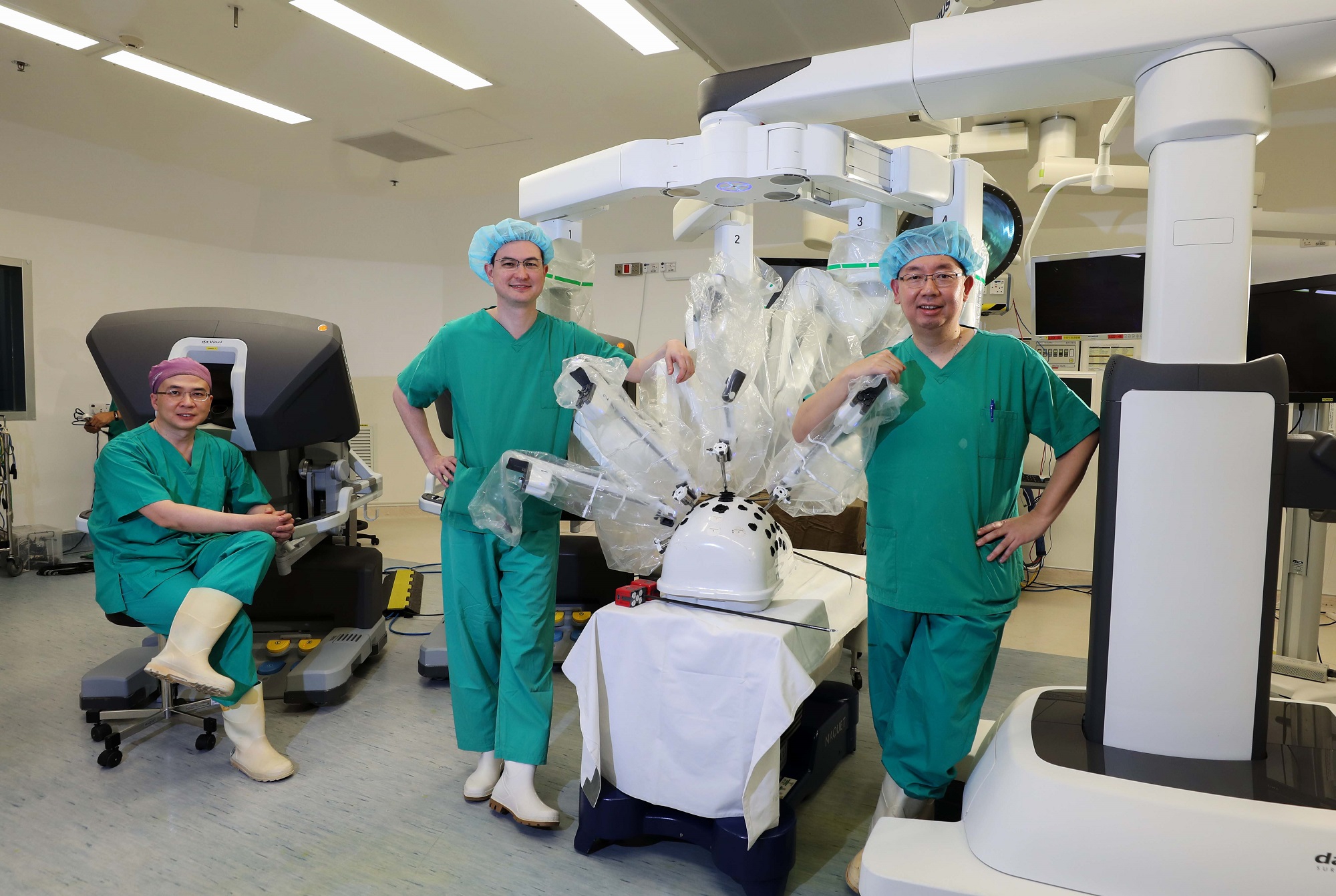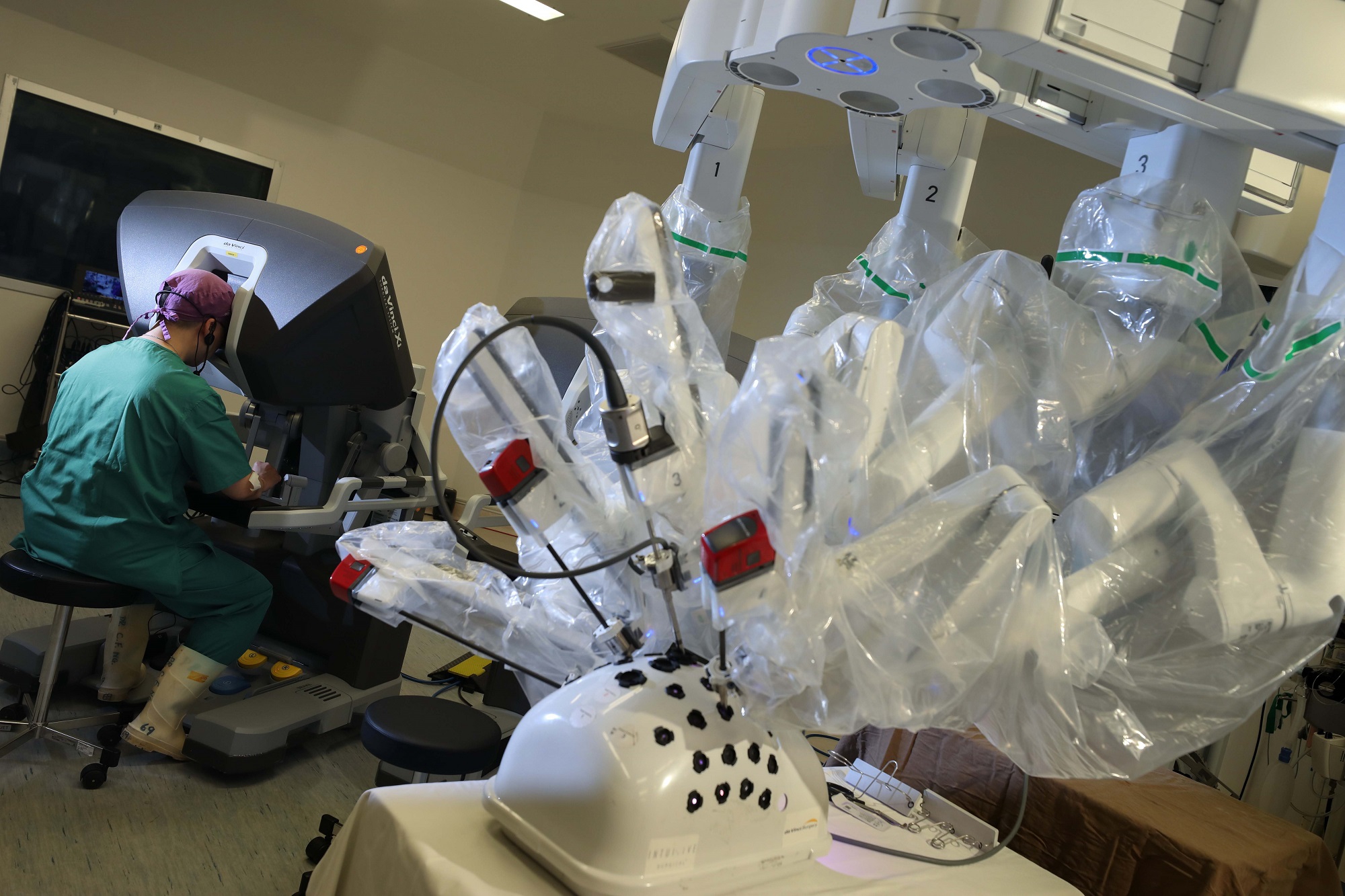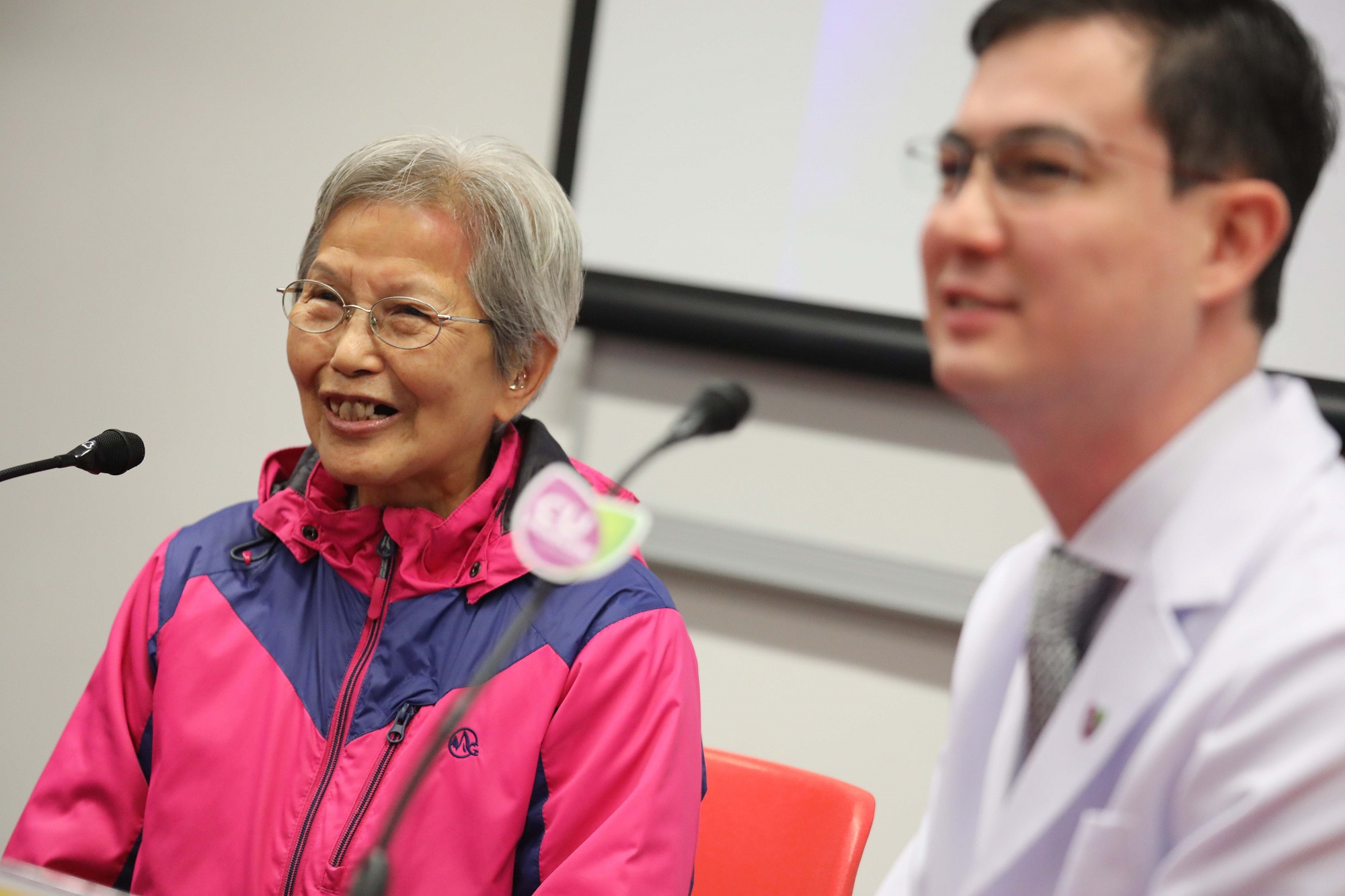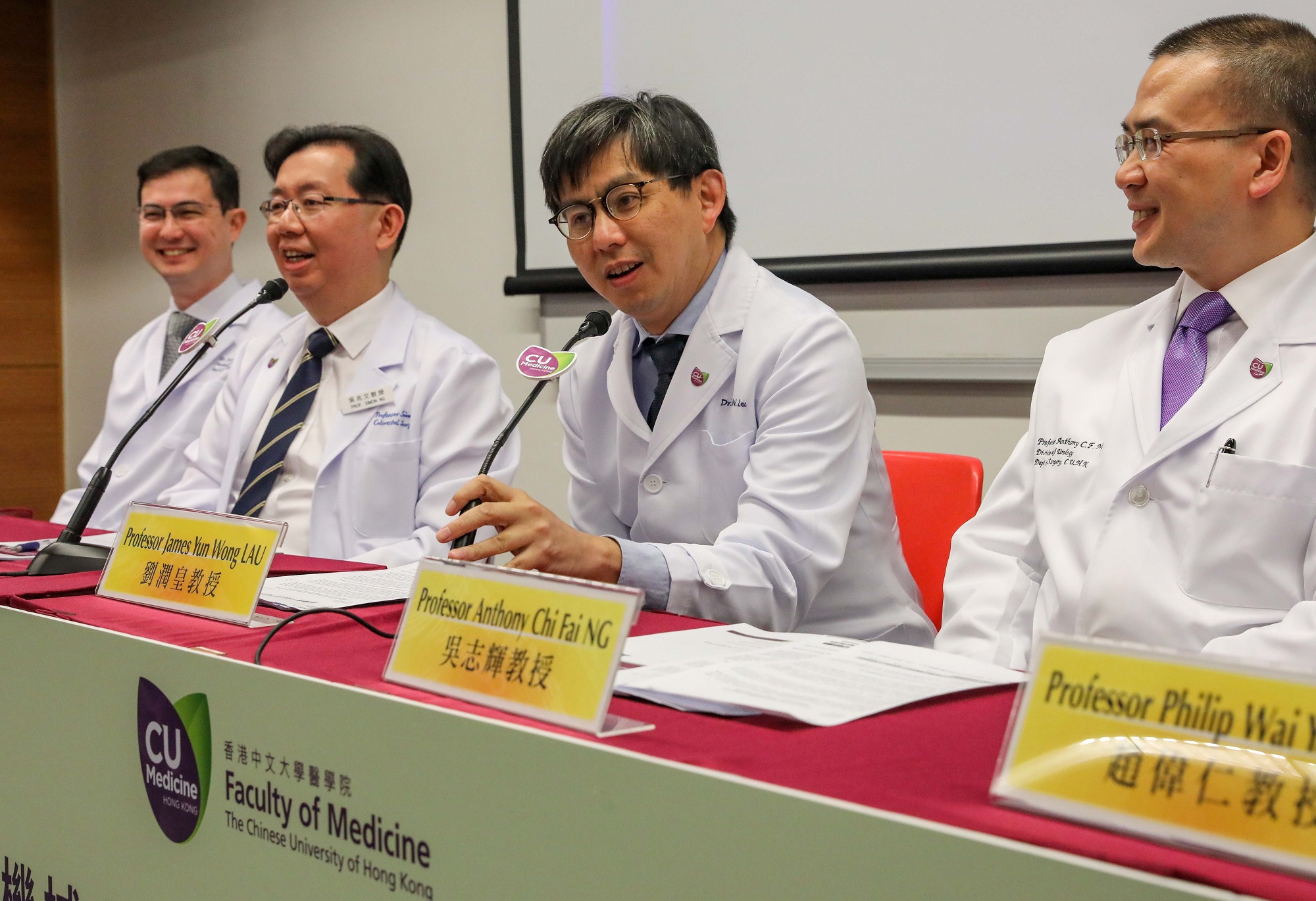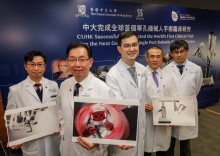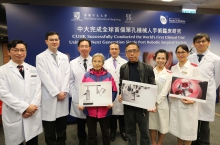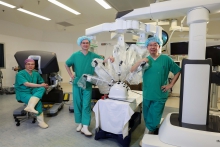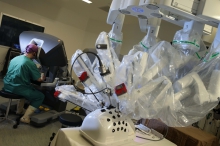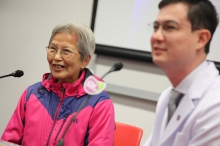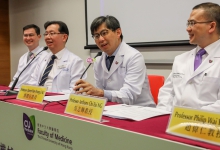CUHK
News Centre
CUHK Successfully Conducted the World’s First Multi-Specialty Clinical Trial Using the Next Generation Single Port Robotic Surgical System
The Faculty of Medicine at The Chinese University of Hong Kong (CUHK) conducted the world’s first multi-specialty clinical trial using the “Single Port Minimally Invasive Robotic Surgical System”. More than 60 patients underwent single port robotic-assisted minimally invasive surgery (MIS) as part of this trial and demonstrated that multiple procedures could be performed through a single entry site. The novel system allows surgeons to reach deep spaces previously difficult to reach, like the nasopharynx and the hypopharynx, to carry out delicate procedures with precision.
The clinical trial results have provided valuable data for the introduction of the single port surgical robotic system for clinical use and the development for wider applications in multiple specialties. The success showcases that the clinical standard of the Faculty of Medicine at CUHK is recognised internationally and supported by a solid cross-disciplinary working team, comprising of multi-specialty surgeons, nurses and anaesthesiologists, who collaborated closely and effectively to perform and complete the clinical trial. It also reinforces the status of the Faculty as global research hub and training ground for MIS.
All instruments are incorporated in a single robotic arm that operates through a 2.5 cm cannula
MIS was introduced to the Faculty of Medicine at CUHK in June 1990. The aim of this surgical technology is to minimise the size of incisions, reduce trauma and pain suffered by patients, enable faster recovery and lower the risk of infection. It has become more commonly practised and advanced in Hong Kong and can be applied to the removal of gallstones, tumors of the gastrointestinal tract, adrenal gland and even hepatectomy. In 2005, minimally invasive robotic surgery was introduced in the Faculty. The multiport robotic-assisted system consists of 4 arms which are used to control the surgical instruments and the endoscopic camera that are placed in the surgical field via 4 pencil-sized “keyhole” incisions.
With the advancement of design and technology, the next generation of minimally invasive robotic-assisted surgical system only needs a single entry site for 3 instruments and a high-definition (HD) 3D camera operated through an incision or a natural orifice which enables the 2.5 cm system cannula to go through. The instruments can reach up to 24 cm and the robotic boom can rotate 360 degrees. Trained surgeons can control the instruments at the distal tip and view the superior HD 3D image of the operating field through the endoscope via the console. These features enable surgeons to perform complicated procedures with precision in narrow workspaces.
World’s first multi-specialty clinical trial proved the novel system is safe and feasible in performing MIS particularly through natural orifices
The Faculty of Medicine at CUHK conducted a clinical trial from 2016 to 2017 on the feasibility and safety of the “Single Port Minimally Invasive Robotic Surgical System” in three different surgical specialties, including Otorhinolaryngology, Head and Neck Surgery (ENT); Urology, and Colorectal Surgery. There were no device-assisted or serious adverse events in any cases. Details are as follows:
|
|
Otorhinolaryngology, Head and Neck Surgery (ENT) |
Urology |
Colorectal Surgery |
|
No. of cases undergoing single-port robot assisted surgery |
21 |
20 |
22 |
Dr. Jason Ying Kuen CHAN, Assistant Professor, Department of Otorhinolaryngology, Head and Neck Surgery of the Faculty of Medicine at CUHK, stated, “Taking transoral robotic surgery as an example, the robotic arm of the new system allows truly minimally invasive access to previously more difficult to access sites including the nasopharynx, larynx and hypopharynx. The system makes it possible for the surgeon to better dissect critical neurovascular structures with the instruments and camera in a working space that is roughly the size of a tennis ball. We believe the advance in the technology offers a platform from which surgeons can develop novel approaches to handling cases, with minimal invasiveness, to facilitate patient recovery and minimise morbidity.”
For Urology and Colorectal Surgery, the low external profile of this new robotic platform and the possibility of deployment through a single access site can facilitate single port transabdominal surgery such as prostatectomy and colectomy, and natural orifice transluminal endoscopic surgery (NOTES) such as transanal robotic surgery. By minimising the number of external abdominal incisions, single port surgery and NOTES can theoretically reduce patient trauma, enhance recovery, and improve cosmesis. With natural orifice access (transoral and transanal), there may be no external incisions for some patients.
Professor Simon Siu Man NG, Professor from the Division of Colorectal Surgery, Department of Surgery of the Faculty of Medicine at CUHK, added, “Our Faculty was selected to conduct this clinical trial showcases that we are recognised globally as the pioneer in developing MIS. Our credible clinical team, involving surgeons, anaesthesiologists and nurses, are experienced in minimally invasive robotic surgical systems. This helps lay a strong and solid cross-disciplinary working structure to perform world-class clinical trials for the further development of robot-assisted MIS.”
CUHK committed to enhancing medical technology and aims to be the global MIS training ground and research hub
In recent years, the Hong Kong Government has been committed to promoting innovation and technology (I&T). These extremely exciting developments include the establishment of I&T clusters on healthcare technologies, artificial intelligence and robotic technologies. In view of the potential of I&T development, CUHK has been actively involved in this process of driving innovation in medical technology through close collaborations among clinicians, engineers and entrepreneurs which develops new concepts and inventions in medical technology of which medical robotics is a key element.
Professor Philip Wai Yan CHIU, Director of the CUHK Jockey Club Minimally Invasive Surgical Skills Centre (MISSC), hopes the success in the clinical trial will not only enhance and drive the development of medical engineering research, but also help the introduction of the single port surgical robotic system for clinical application in Hong Kong. Professor CHIU stated, “Our clinical trial results have provided valuable data for the introduction of the single port surgical robotic system for clinical use. Certainly the system has a lot of potential applications in other specialties and more patients can benefit from the broader use of this robotic system.”
To train Hong Kong, mainland and regional surgeons in the robotic system and keep them up-to-date with the other current minimally invasive surgical techniques, MISSC has been upgrading its facilities. For example, it has upgraded the system for robotic training to the currently most advanced model in clinical applications.
Professor Anthony Chi Fai NG, Professor from the Division of Urology, Department of Surgery of the Faculty of Medicine at CUHK, as well as the Robotic Surgery Training Course Director at MISSC, said, “We hope that through the advances in minimally invasive surgery facilities, we can provide an ideal training setting for medical professionals in Hong Kong and neighbouring areas, and become a minimally invasive surgery training ground and research hub in the Asia-Pacific region and at the international level.”
CUHK Medicine successfully conducted the world’s first multi-specialty clinical trial using the next generation single port robotic surgical system. The study results demonstrated that multiple procedures could be performed through a single entry site and the novel system allows surgeons to reach deep spaces previously difficult to reach to carry out delicate procedures with precision. (From right) Professor James LAU, Chairman of the Department of Surgery; Professor Anthony NG, Division of Urology, Department of Surgery; Dr. Jason CHAN, Assistant Professor, Department of Otorhinolaryngology, Head and Neck Surgery; Professor Simon NG, Division of Colorectal Surgery, Department of Surgery; and Professor Philip CHIU, Director of the CUHK Jockey Club Minimally Invasive Surgical Skills Centre, of the Faculty of Medicine at CUHK.
The surgical team which has conducted the clinical trial. Fourth from right and fourth from left are the patients Mr. CHUK (fourth from right) and Ms CHENG (fourth from left) respectively.
The surgical teams of the Faculty of Medicine at CUHK are recognised globally as the pioneer in developing Minimally Invasive Surgery.
After receiving the single-port robotic-assisted surgery to remove his colorectal tumor, Mr. CHUK’s (left) scar is hidden in the navel.
Ms CHENG (left) states that she could speak naturally after receiving the single-port robotic-assisted surgery to remove the tumor under her tongue.


